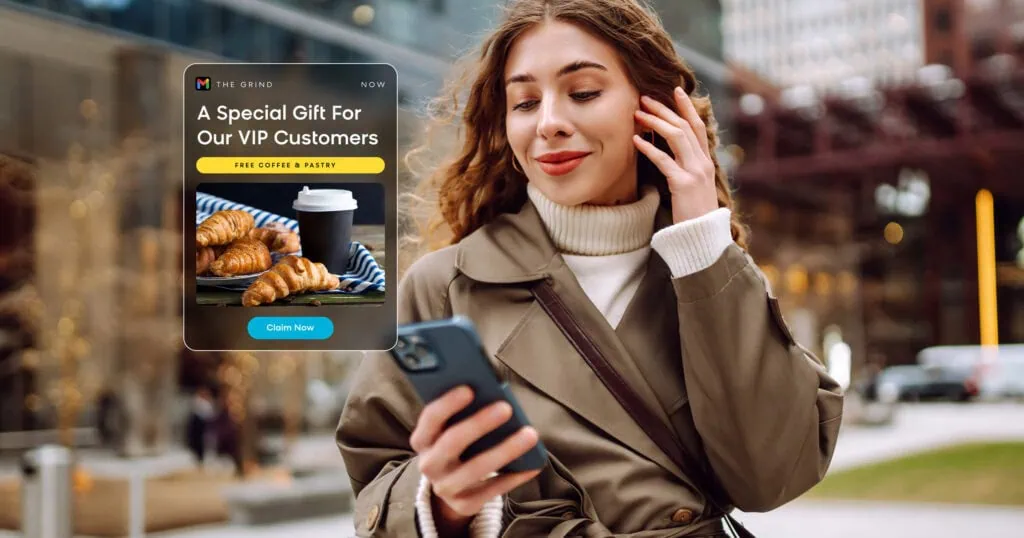Over the past few years, digital transformation has hit hyperdrive. Quarantines and social distancing drove people to digital spaces, or as McKinsey put it, “consumers vaulted five years in the adoption of digital in just eight weeks.”
It’s been a change for everyone, even those less experienced with the digital world. In Latin America alone, 13 million people made their first-ever online purchase during the first two months of the pandemic.
This means companies must now wrestle with what an improved customer experience looks like in the post-COVID age. How can brands take advantage of the best parts of digital experiences — scalability, time savings, cost savings, and automation — while still making a human connection with customers?
In today’s market, the biggest challenge is converting interest to action. But getting there requires a critical rethinking of the customer experience. To successfully merge the online and offline experience into a customer journey that shoppers are looking for, you need to:
-
Give customers more control over their experiences and offer insights to help them make better decisions.
-
Move from reactive to proactive — don’t wait for problems to pop up. Instead, provide in-the-moment solutions that add real value.
-
Foster a sense of trust. Customers are much more likely to adopt new experiences if they feel brands have their best interests in mind.
-
And last but not least, you should constantly strive to remove needless friction across digital and mobile engagements to streamline sign-ups and scale conversations.
Facilitating these strategies is at the crux of Bloomreach’s partnership with Sinch. Like all of Bloomreach’s agency and technology partnerships, these connections help customers fully utilize the ecommerce ecosystem, build a more efficient tech stack, and create world-class customer experiences.
With Bloomreach Engagement, companies can collect data compliantly and seamlessly while activating those key insights in intelligent and targeted marketing campaigns. And with powerful tools like Sinch’s SMS messaging, voice, video, and verification APIs, that data can drive game-changing results.
Investing in mobile experiences — and the wide range of new channels and formats — will be key in nailing customer experience, improving customer loyalty, and future-proofing your brand during a super-speed digital expansion.
Sinch wanted to learn more about the key trends driving customer experience, so they spoke to over 2,900 consumers globally to build a snapshot of this fast-changing world.
Curious about what they learned? We are, too. Let’s dive in!
Give Customers More Control Over Their Experiences
Consumers face a tsunami of notifications, which doubled in volume from 2019 to 2020 — but do these communications offer more value?
Sinch found that consumers would love messages that include rich content, like the ability to reply in-message to ask follow-up questions. Enriched content gives customers more control over their experiences while also building relationships. To do this, companies need to adopt a practical, personalized approach to mobile messaging.
That means delivering notifications your customers want: order and shipping notifications, service downtime alerts, secure login verifications, appointment reminders, and personalized promotions. These just-in-time reminders drive customer loyalty and satisfaction, supporting customers exactly when they need information or help. One-way text messaging is also very scalable as your audience grows.
Companies also need to let customers easily control the tempo of messages and customize what they want to receive using a mobile preference center. After a customer subscribes to messaging, you’ll want to offer more options than just “on” or “off.” Mobile preference centers let users control what they see and how often.
Does a customer want promotional coupons? How many messages is too many? A mobile preference center lets them answer these questions for themselves, and shows you want to deliver a great experience.
Be More Proactive Than Reactive
One-way notifications and preference centers are mobile CX fundamentals. But beyond those, how can companies enhance customer experience when so many interactions happen at a distance?
The key lies in shifting from reactive to proactive messaging — not just messaging for messaging’s sake, but driving conversations and offering solutions that add real value.
Remember, messaging is a unique channel. A phone is usually in your customer’s hand or pocket, and mobile messages have high open rates because they appear on the lock screen. It’s an always-on, hyper-personal channel to reach your customer, which requires care (and a dose of restraint).
So, how can you make sure that you’re sending messages that are welcome and valuable?
Sinch spoke with Matt Reid, Vice President of Omnichannel Marketing at Vail Resorts, about this very topic. He saw an opportunity for the company to use the mobile channel to enhance customer experience by personalizing messages to skiers. Vail Resorts now uses Sinch’s mobile messaging to publish real-time ski reports, promotions, and even playful messages to customers — all personalized by customer analytics.
“The shift to mobile puts more of the experience in the customers’ hands, and you have to be clear about the value you add,” Reid said.
Engaging interactions aren’t only for “fun” industries like travel and leisure. In telecom, customers who have problems installing new equipment or troubleshooting a problem may worry about inviting technicians into their homes. Sending how-to videos via messaging or conducting technician visits via video calls can bridge the gap and support customers from a distance.
Striking a balance between promotional, useful, and engaging messaging is important. While most customers like getting discounts and coupons on their phones, approval ratings for promotional messages are lower for other types of messages from brands. When it comes to promotional messaging, moderation is key.
Build Trust in Digital Interactions
Of course, messaging isn’t just a one-way channel. Top brands use two-way conversational messaging to deliver even more value, and that goes a long way in customer retention. A better experience builds trust between brand and customer.
By putting chatbots to work via mobile messaging channels, brands can give customers the answers they need in a fraction of the time. Plus, it lets customers know that the company is listening to their comments, questions, and concerns on an individual level.
Whether it’s responding to routine customer service inquiries (like requesting a return shipping label for a product exchange), looking up whether something you want to buy is in stock at your local store, checking appointment wait times, or even ordering a pizza, two-way messaging saves customers time and saves your company money.
Mobile messaging is a perfect tool for these requests because it is always on and ready to solve problems. It creates a connection and launching point for a wide range of actions — from digital commerce and customer loyalty programs to customer support.
Sinch’s research shows that people really like the convenience and speed of chatbots. Of those who use chatbots (roughly half of those surveyed), 8 in 10 say they like using them because they get faster answers, chatbots offer them privacy, and they’re “always on.”
CX is now going beyond omnichannel and into truly seamless communication. Any channel, any time — one conversation, multiple options. But for this trend to continue, companies need to foster trust in relationships with customers.
By offering a better digital service, you can encourage customers to try new experiences, which is why it’s so important to make sure every touchpoint is a pleasant and seamless interaction.
Remove Friction in Digital Engagements
Activating more and more of these real-time experiences across channels and platforms will ultimately drive deeper, more profitable connections with customers. But, as with any innovative technology, we need to question every step of the customer journey and ask, “is there a more satisfying way to do this?”
We need to think about the big picture — every single touchpoint that a customer engages with is a chance to build your brand and develop long-lasting relationships. But when a customer feels frustrated or encounters friction in the shopping journey, it’s a step backward. We need the very best technologies, and we need to use them intelligently across all channels, to ensure this doesn’t happen.
The opportunities to serve and engage customers using messaging are endless. And there’s no time like the present to experiment with these new applications and future-proof your company!
Curious about all the exciting ways a better customer experience can help transform your business? Bloomreach Engagement has all the capabilities you need to take your CX to the next level. Schedule a personalized demo today to learn more.
















